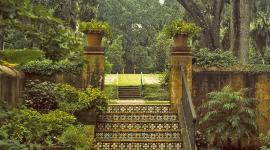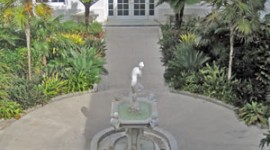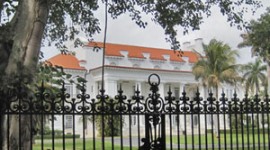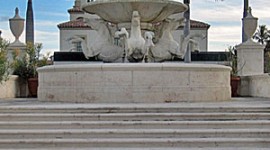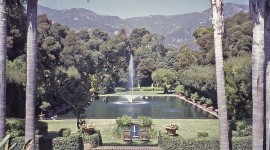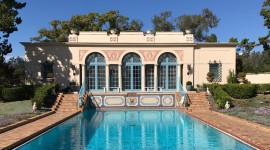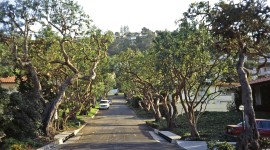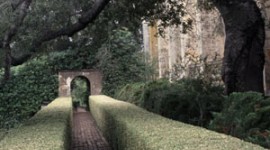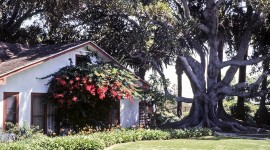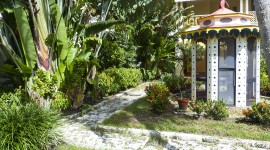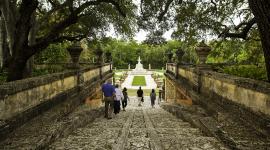Mediterranean
Found primarily in the California coastal zone from Santa Barbara to Los Angeles and in Florida boomtowns including Miami, Boca Raton, Palm Beach, and Sarasota, this variant of the Beaux Arts Neoclassical style was popular in the American Country Place Era (late-nineteenth century to the Great Depression). Taking hold in popular culture and made possible by a fecund Mediterranean-like climate, these designs -- often defined by orthogonal geometry and axial design elements -- benefited from an internationally diverse plant palette that ranged from old roses and bougainvillea to citrus, palms, cacti, and cycads planted in outdoor rooms and courtyards. Typically employing Beaux Arts/Neoclassical plans, forms, and elements from Italian Renaissance/Baroque and Islamic-era Spanish and Mediterranean prototypes, the style sometimes drew from multiple sources on a single property. In California the style featured local plants adapted to the arid climate paired with limestone architecture developed from existing local Spanish Colonial precedents. Along with Lockwood de Forest, Jr., such noted designers as Paul Thiene, A.E. Hansen, Richard Requa, and Charles Gibbs Adams popularized this style in California. In Florida, imported subtropical plants and oolitic limestone construction were employed in civic landmarks, subdivisions, and estates to create an appearance of history and permanence. In Florida the style was promoted by developer George Merrick, artist Denman Fink, architects Addison Mizner and August Geiger, and landscape architects Diego Suarez and Frank Button.



